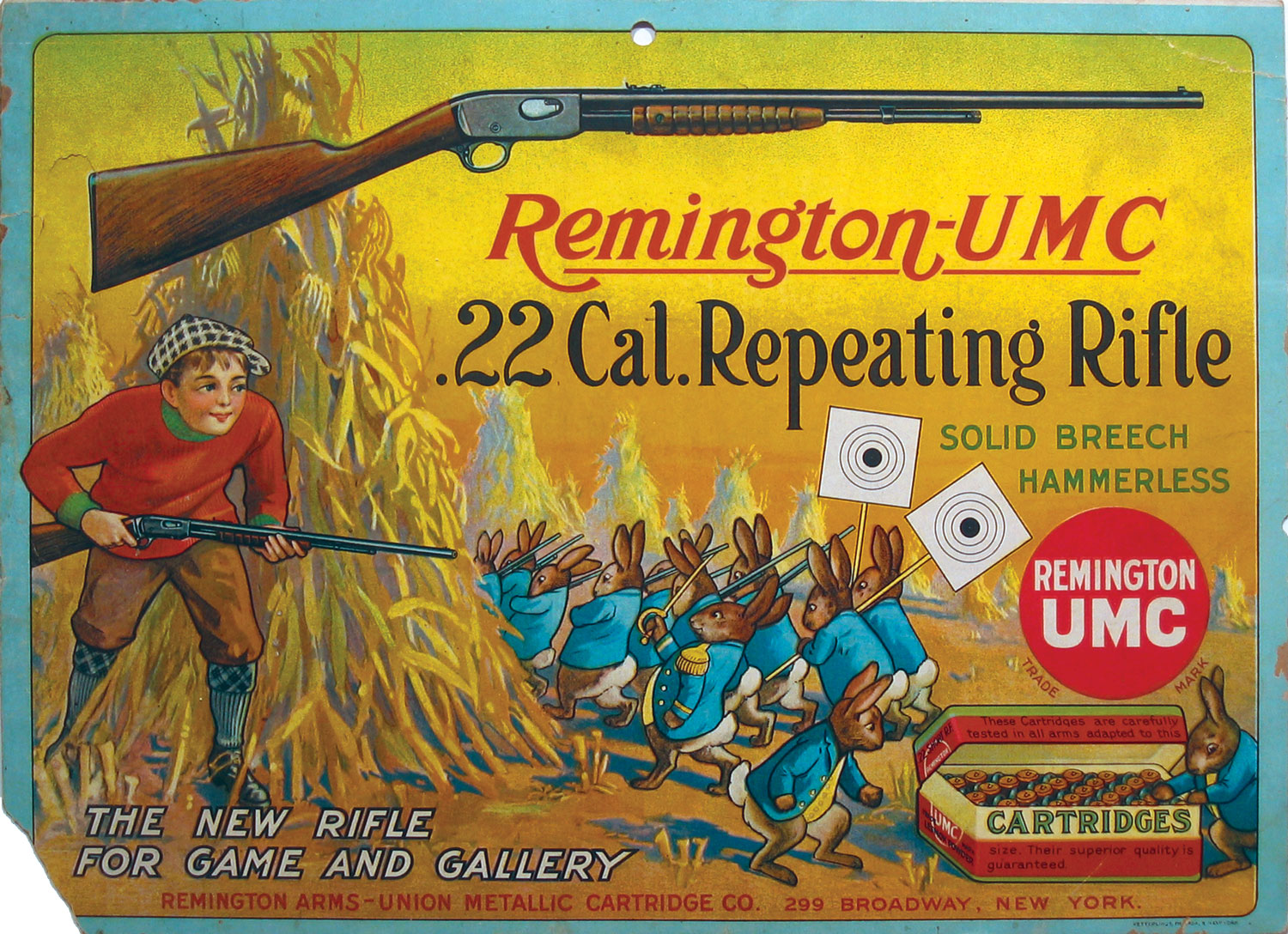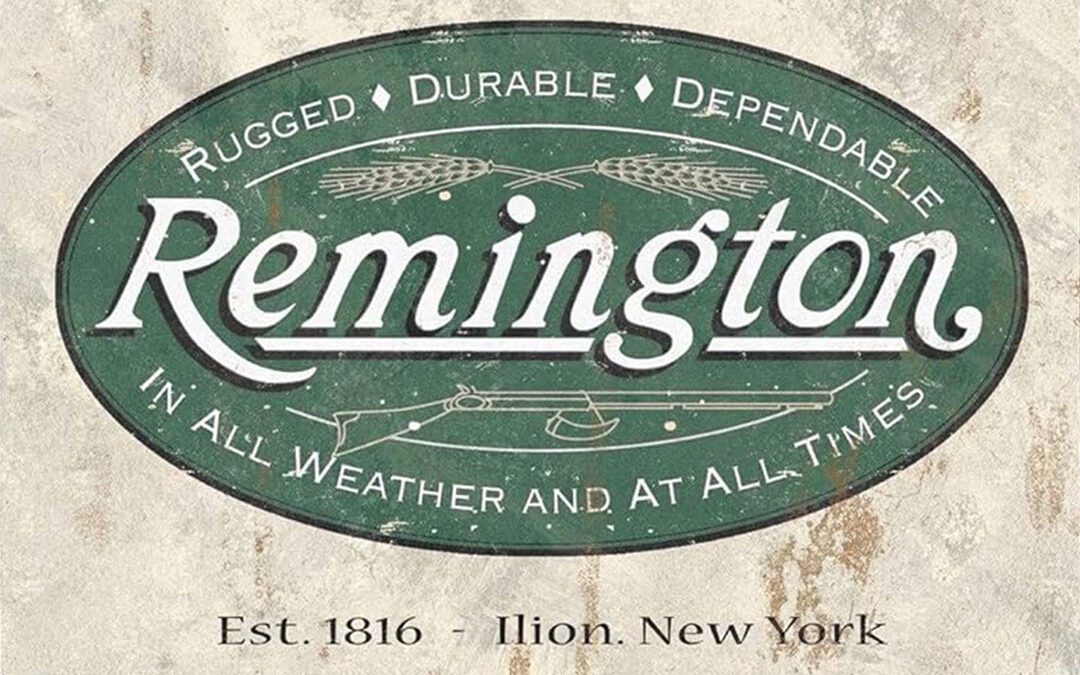It was The Year Without Summer, 1816. On June 6 nearly a foot of snow fell in the Northeast. Waltham, Massachusetts, saw frost on July 8. Crops failed and livestock died, all because a volcano on the other side of the world had erupted the previous year. It was the largest volcanic eruption in recorded history. Indonesia’s Mount Tambora, April 10, 1815, cast a cooling ash cloud over the Northern Hemisphere for almost two years.
Something less explosive, but longer lasting, also happened in the Northeast that summer. A young man named Eliphalet used his father’s forge to build a rifle barrel. After fitting it with a stock and flintlock, he won second place in a local shooting competition. The War of 1812 had just ended. Folks were keenly interested in the kind of accuracy that had enabled the upstart Americans to once again defeat the British and their smoothbore muskets (slow learners). Orders poured in and E. Remington and Sons was up and running.
Remington’s forge stood near Steeles Creek in central New York. When the Erie Canal punched through in 1825, connecting Lake Erie with the Hudson River, commercial traffic picked up. So did Remington’s business. They built a new factory beside the canal. By the time a post office came to his settlement in 1843, the locals wanted to christen the place Remington, but Eliphalet wouldn’t hear of it. They chose Ilion instead, and Ilion, New York, has been synonymous with Remington ever since.
To appreciate how long Remington has been making firearms, consider that when it began, the percussion cap was still four years in the future. Self-contained metallic cartridges wouldn’t appear for another 30 years. George Washington had passed from the scene just 17 years earlier. By the time Eliphalet passed the reins to his sons, Abraham Lincoln was sitting in the White House.
The Civil War created huge demand for Remington rifles and the company flourished, but it had been growing all along. This was the era of rapid firearms evolution, and Remington was in the thick of it.
By 1857 the company was building Beale’s Pocket Revolvers, .31-caliber, 5-shot percussion self-defense guns. Over the next 30 years Remington unleashed nearly three dozen different handguns, including revolvers, derringers (with one, two, and four barrels,) and even rolling-block pistols. In 1875 they began building Single Action cartridge revolvers to compete with Colt, but Colt, two years ahead of the game, had already locked up government contracts. Twenty years later Remington bowed out of the revolver business to concentrate on long arms. It would succeed and succeed wildly.

Tolling the Antelope by Bob Kuhn. Courtesy Remington Arms Corp.
The perfection of the centerfire metallic cartridge in the 1850s created demand for new firearms to shoot them. This had a major impact on Remington on two fronts. First, it gave rise to the Union Metallic Cartridge Company in 1867. This firm merged with Remington in 1912, and the natural amalgamation has made Remington a magnum force in the industry ever since.
Second, metallic cartridges shifted firearms development into overdrive—not that anyone knew what “overdrive” meant in 1860. But nearly everyone understood the benefits of durable, handy, easily stored and loaded metallic cartridges.
Remington’s first big hit was the No. 1 “Rolling Block” of 1868. This became a surprisingly popular working rifle for commercial bison hunters. It was a quick-loading single shot that could handle big thumpers like the .45-70 and .50-70. The Sharps falling-block, single-shot “buffalo rifle” is better known today, but Remington rolling blocks were much more popular then. Sharps sold about 13,000 of its rifles, while Remington sold nearly a million rolling-blocks in various configurations, including rimfires.
In the early years of the 20th century Remington was quick to adopt new firearms designs. In 1906 it began rolling out the John Browning-designed Remington Autoloading Rifle, the M8. This auto was first manufactured by FN of Belgium as the Model 1900. Remington was limited to selling the M8 in the U.S. while FN got the rest of the universe, yet FM sold fewer than 5,000. Remington produced more than 80,000 before modifying it and selling 55,000 more as the M81.
The company’s autoloading success picked up in 1955 with a new action based on a rotating bolt head operated by gas piston action. This was the M740 Woodsmaster that progressed through the 742 and 7400 versions before being put to pasture by today’s R-15 and R-25 modern sporting autoloaders.

Slide- or pump-action rifles entered the Remington lineup as early as 1912 with the Model 14. This pump was Remington’s answer to popular Marlin and Winchester lever actions. Shooters argue the pros and cons of each, but its hard to beat the slick, fast, in-line action of the pump. Remington chambered the M14 and subsequent upgrades for effective, popular rounds like the .35 Remington. This slide action had a unique, spiraled, tubular magazine that stacked cartridges one behind the other without bullet tips touching primers. Alas, ammunition of the time rarely sported sharply tipped bullets to take advantage of this potential ballistic improvement.
The M14 pointed Remington to its highly successful Model 760 slide-action. Unveiled in 1952, the Gamemaster held cartridges in a stacked magazine. It’s multiple, interrupted-thread locking lugs were more than strong enough to lock in the pressures of fully modern, high-energy rounds like .30-06, .270 Win. and .280 Remington. The Gamemaster remains in Remington’s line to this day as the Model 7600. It’s extremely popular in eastern whitetail woods.
Over the decades Remington has produced a blur of rimfires, including bolt actions, slide actions, autoloaders, rolling blocks, single shots, repeaters, and the only lever-action the company ever built—the Nylon 76. This unusual rifle was built with not just a nylon stock, but a nylon action. It was billed as the world’s fastest lever-action, but it was never as popular as its cousin, the Nylon 66 autoloader. An exhibition shooter used one of these light, durable rifles to hit 100,004 out of 100,010 hand-tossed wooden blocks. Much less popular were the Nylon 10, 11, and 12 bolt actions. Produced from 1959 to 1987, the Nylon .22s foreshadowed the synthetic stocks of today.
Perhaps the best, most-appreciated, and lasting rifle innovation from Remington was and remains the Model 700 push-feed action. Evolved from the M721 and M722 models built from 1948 through 1961, the M700 eschewed the complex Mauser action in favor of a simpler cylindrical receiver that could be turned quickly and accurately on a lathe. The new dual-lug, push-feed bolt enclosed cartridge heads in a recessed face that included a small C-clip extractor and spring-loaded plunger ejector. Locked into a barrel screwed into the receiver ring, the design protected the cartridge with “Three Rings of Steel.”
The design proved remarkably accurate. Released simultaneously with the new 7mm Remington Magnum cartridge, the M700 leaped out of the starting gate and never looked back. Over the years it has been chambered for at least 30 centerfire cartridges, and matched with more stock options, barrel weights, lengths, and shapes than perhaps any other centerfire rifle in the world.
This brief retrospective barely touches upon Remington’s firearms and legacy, and that perhaps is the best compliment we can bestow upon this venerable and venerated American arms manufacturer. Remington: 200 years and counting.
Note: Oddly, Winchester Repeating Arms Co. once owned 50 percent of Remington Arms Co. They shared it from 1888 until 1896 with Marcellus Hartley of the Union Metallic Cartridge Co. Hartley was president of Remington and Thomas Bennet of Winchester was vice president.

